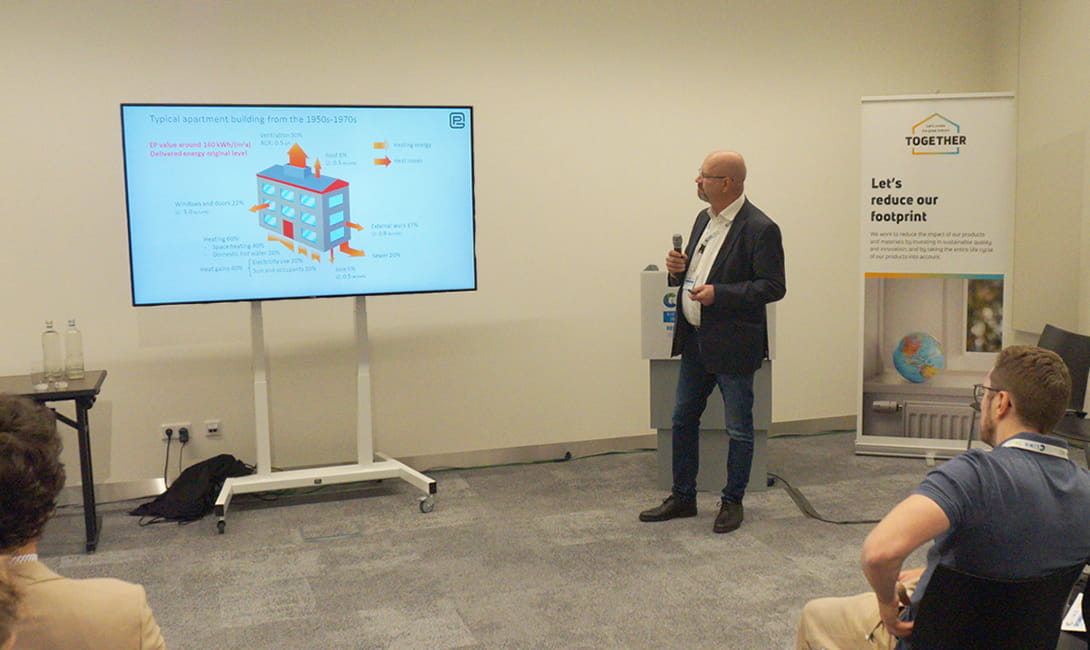- Renovation
- Radiators
- Underfloor heating
- Energy saving
- Insights
House renovation: deep renovation techniques compared across EU countries
The renovation of our building stock is key to drive the clean energy transition. But what are the best house renovation techniques and how do climatic conditions affect their results in different countries? That’s what Purmo’s latest research project attempts to establish with a study on deep renovations in 3 EU countries.
Renovation Wave
For Europe to become climate neutral by 2050 the EU’s Renovation Wave initiative is essential. However, to decarbonize Europe’s building stock by 2050 the current renovation rate needs to be tripled. Ranging from single-family house renovations to multifamily and commercial buildings, this means examining the energy flows, optimising the building’s energy performance – often through a renovation of the building envelope – and possibly introducing heat recovery.Typical house for renovation
To get more insights in which renovation techniques create the better energy performance in different climatic conditions, the research study that Purmo Group launched at the beginning of 2022 initially applied two deep renovation concepts to a typical German single-family house from the seventies. In its original condition the house has a gas boiler that heats radiators with a flow temperature of 90/70°C, a mechanical exhaust ventilation, single-pane windows and an unheated cellar and attic.In a second phase, the study will focus on multifamily buildings with similar criteria.
HVAC renovation concepts
To bring this outdated house up to par with the current energy standards, Mikko Iivonen, Senior R&D Adviser at Purmo Group, created two deep renovation concepts together with researchers and professors from Tallinn University of Technology (Taltech), the Technical University of Dresden and the University of Padua. Both concepts include building envelope improvements such as additional insulation of the external walls, roof, attic, and floor towards the unheated cellar, the installation of new 3-pane windows, PV panels and an AC unit for cooling (air-to-air split system).The first HVAC renovation concept adds an outdoor air-to-water heat pump to this, as well as underfloor heating and mechanical supply and exhaust ventilation with heat recovery (HRV). The second renovation concept combines an exhaust air heat pump with mechanical exhaust ventilation where the evaporator extracts heat from the exhaust air to heat the radiators and the domestic hot water in the house.
Energy performance calculations
Both methods logically have energy saving effects and improve the building’s energy efficiency. That’s no secret. National energy performance calculation methods, on the other hand, sometimes do seem to be a secret. A different approach to the calculation, combined with different climate conditions can create a very different outcome. Therefore, the study simulated the same house renovation in Estonia (Nordic climate), Germany (central European climate) and Italy (southern European climate), using the IDA ICE building physics software.Results compared
When looking at the single-family house in its original state, the Estonian calculation method calculates a primary energy consumption of 364 kWh/m2, compared to respectively 295 kWh/m2 and 182 kWh/m2 for Germany and Italy. Already a significant difference. If we then apply deep renovation method one, energy consumption drops substantially to 76 (EE), 50 (DE) and 43 (IT) kWh/m2. For the second renovation concept, the results are comparable with 86 (EE), 45 (DE) and 48 (IT) kWh/m2.These results do not take into account the heating energy provided by the photovoltaic panels. If we do add this factor to the calculation, the values for primary energy consumption completely change and are even negative (including the building’s energy) in the Italian model, where heating demand is lower due to the warmer climate. For HVAC renovation concept one the values are 45 (EE), 33 (DE) and -55 (IT) kWh/m2. For the second method the energy consumption amounts to 55 (EE), 18 (DE) and -50 (IT) kWh/m2.
Conclusion
Following the simulation of a house renovation in 3 different European countries, the study concludes that both proposed renovation concepts are suitable for a deep renovation, amounting to -70% and more in primary energy consumption. The first concept including the air-to-water heat pump generally outperforms the exhaust air heat pump. However, this requires the installation of an HRV ventilation system, which results in a higher investment cost. A great advantage of the second renovation concept is that residents can continue to live in the house during the renovation.The study also shows that in deep renovated buildings the heat demands are significantly lower than in the original buildings and thus the normal-sized radiators function properly with heat pumps.

